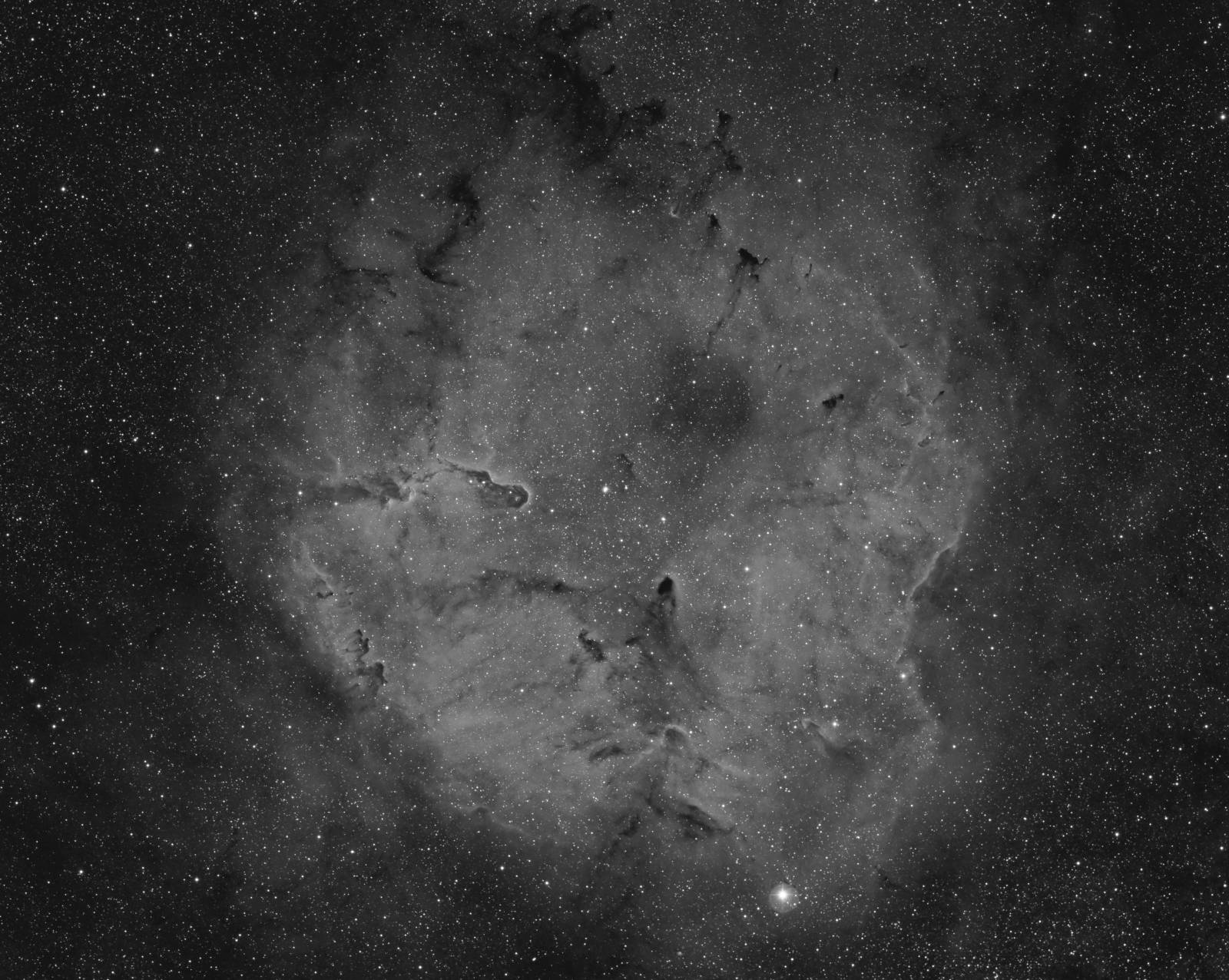IC 1396 (H-alpha)
 Click image for full size version
Click image for full size version
June 12, 2017
IC1396 is a large cloud of faintly glowing gas, composed mainly of hydrogen. It is a huge object in the sky, with a diameter more than six times that of the Moon. That’s because it is both relatively close to us (2,400 light years) and big (more than 100 light years across). The energy that makes the nebula’s gas glow comes from the bright star at the centre of the nebula, called HD 206267. Jutting in from the o’clock position is the well known Elephant’s Trunk Nebula, which features in another image I’ve taken of this object. The Elephant’s Trunk is a star forming region, and there are a number of very young stars — less than 100,000 years old — in its vicinity. IC1396 is textured throughout with many dark nebula. It’s hard not to notice Mu Cephei, the brightest star in the image. It is about 38,000 times as bright as the Sun. Bring your sunscreen.
In the coming weeks I will be collecting broadband colour data which I will blend with the H-alpha data to make a full colour version .
Tekkies:
Moravian G3-16200 EC camera (on loan from O’Telescope), Optolong 7nm H-alpha filter, Takahashi FSQ-106 ED IV at f/3.6, Paramount MX. Acquisition with the SkyX unguided. Focused with FocusMax. All pre-processing and processing in PixInsight. Acquired from my SkyShed in Guelph. Nearly full moon, average transparency and poor seeing.
10x20m Ha unbinned frames (total=3hr20m).
H-alpha Processing
Master Creation and cleanup: The BatchPreProcessing script was used to perform calibration, cosmetic correction and registration of all frames. DrizzleIntegration was used to make the H-alpha master. The master was cropped to remove edge artifacts and processed with DBE.
Deconvolution: A star mask was used as a local deringing support image. A stretched copy of the H-alpha master was used as a range mask to protect low signal areas. Deconvolution was applied (80 iterations, regularized Richardson-Lucy, external PSF made using DynamicPSF tool with 20 stars).
Linear Noise Reduction: MultiscaleLinearTransform was used to reduce noise in the image. Layer settings for threshold and strength: Layer 1: 5, 1.0 Layer 2: 3.5, 0.84 Layer 3: 2.5, 0.71 Layer 4: 1.0, 0.55 Layer 5: 1.5, 0.28 Layer 6: 1.0, 0.16.
Stretching: HistogramTransformation was applied using ScreenTransferFunction autostretch settings.
Non-linear Noise Reduction and Re-Stretch: TGVDenoise was applied in L*a*b* mode with 300 iterations with a range mask used to protect high signal areas. This was followed by a HistogramTransformation to raise the black point (but with no clipping).
Final Steps: LocalHistogramEqualization was applied to the brighter parts of the nebula using a range mask to protect background and stars. Background, nebula and star brightness and contrast were adjusted in several iterations using Curves with masks as required. The DarkStructureEnhance script was applied (8 layers, strength of 0.15).
Image scale is about 1.6 arcsec per pixel for this camera / telescope / combination and Drizzle integration.






Leave A Comment